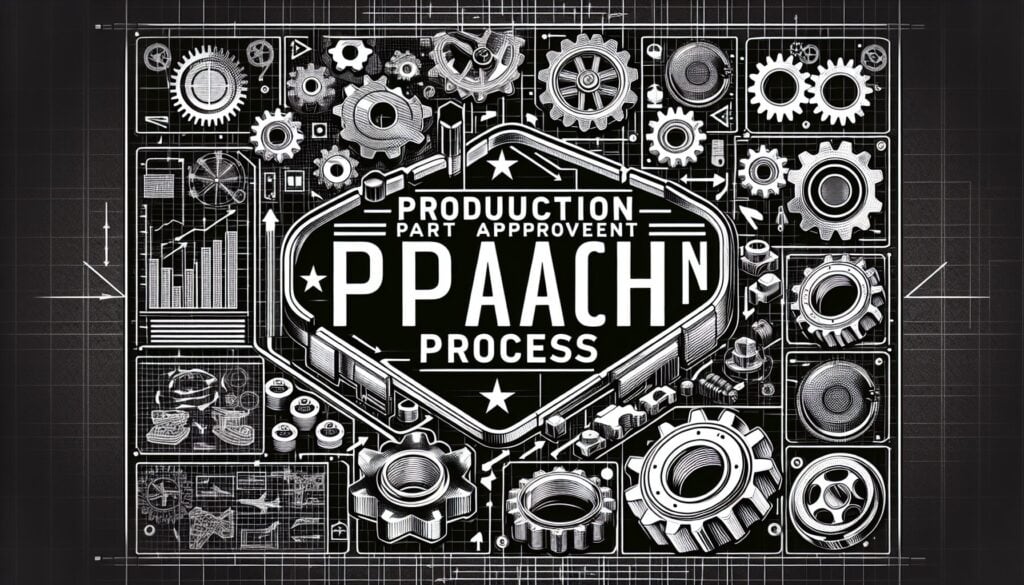A standardized process in the automotive and aerospace industries (and others) that ensures suppliers can consistently produce parts that meet the customer’s engineering design record and specification requirements.
- المنهجيات: العملاء والتسويق, الاقتصاد, لين سيجما, تصنيع, إدارة المشاريع, الجودة
PPAP (عملية الموافقة على جزء الإنتاج)

PPAP (عملية الموافقة على جزء الإنتاج)
- التخطيط المتقدم لجودة المنتج (APQP), القدرة على المعالجة, تحسين العمليات, عملية الموافقة على أجزاء الإنتاج (PPAP), ضمان الجودة, مراقبة الجودة, إدارة الجودة, نظام إدارة الجودة (QMS), قوة الموردين
الهدف:
كيفية استخدامه:
- The supplier compiles a package of documents and samples (the PPAP package) providing evidence that their manufacturing process can consistently produce parts meeting all requirements. This package is submitted to the customer for approval before full production begins.
الايجابيات
- Ensures clear communication of requirements between customer and supplier; Verifies supplier's understanding and capability to meet requirements; Reduces risks of non-conforming parts in production; Provides objective evidence of قدرة العملية.
سلبيات
- Can be very document-intensive and time-consuming for suppliers; Requirements can be complex and vary between customers; Any changes to product or process often require re-submission, adding to workload.
الفئات:
- تصنيع, الجودة
الأفضل لـ
- Ensuring that suppliers' production processes are capable of consistently producing parts that meet all customer specifications before mass production.
PPAP is widely utilized in automotive, aerospace, and manufacturing industries, where the precise quality of parts is paramount. This methodology is particularly relevant during the transition from prototype to mass production, ensuring that any parts submitted can meet the design specifications and regulatory standards expected by the customer. Participants typically include suppliers, quality assurance teams, and engineering personnel from both the supplier and customer sides, creating a collaborative environment for clarity and mutual understanding. Key components of the PPAP package may include design records, engineering change documents, process flow diagrams, control plans, measurement systems analysis, and initial sample inspection reports. These documents serve to verify that all production processes are capable of producing conforming product consistently, offering a systematic approach to quality management. Engaging in this process can preemptively address potential discrepancies, thus minimizing the likelihood of costly production delays or recalls caused by non-conforming products. The adoption of PPAP enhances transparency and trust, as both suppliers and customers are committed to fulfilling agreed-upon quality benchmarks, fostering a strong partnership built on accountability and shared objectives in delivering quality outcomes.
الخطوات الرئيسية لهذه المنهجية
- Review customer specifications and requirements.
- Conduct a process flow diagram analysis.
- Complete the Process Failure Mode and Effects Analysis (PFMEA).
- Establish control plans for the manufacturing process.
- Perform measurement system analysis (MSA).
- Validate product design through dimensional and functional testing.
- Submit the PPAP package including samples and documentation.
- Address any customer feedback or requests for additional information.
- Receive customer approval for the PPAP submission.
- Commence full production upon approval confirmation.
نصائح للمحترفين
- Implement real-time monitoring and data collection during initial production runs to identify variations early in the process.
- Use advanced statistical tools such as Control Plans and Process Flow Diagrams to document and analyze production processes extensively.
- Establish a multi-disciplinary team involving design, quality, and manufacturing engineers during PPAP preparation to ensure thoroughness in each aspect of part production.
لقراءة عدة منهجيات ومقارنتها, نوصي باستخدام
> مستودع المنهجيات الشامل <
مع أكثر من 400 منهجية أخرى.
نرحب بتعليقاتكم على هذه المنهجية أو المعلومات الإضافية على قسم التعليقات أدناه ↓، وكذلك أي أفكار أو روابط متعلقة بالهندسة.
السياق التاريخي
1949
1950
1950
1960
1960
1960
1960
1940
1950
1950
1958
1960
1960
1960
1960
(إذا كان التاريخ غير معروف أو غير ذي صلة، على سبيل المثال "ميكانيكا الموائع"، يتم تقديم تقدير تقريبي لظهوره الملحوظ)















منشورات ذات صلة
استبيانات الانزعاج العضلي الهيكلي
الاختبار متعدد المتغيرات (MVT)
تحليل الانحدار المتعدد
أنظمة التقاط الحركة
طريقة MoSCoW
اختبار متوسط المزاج